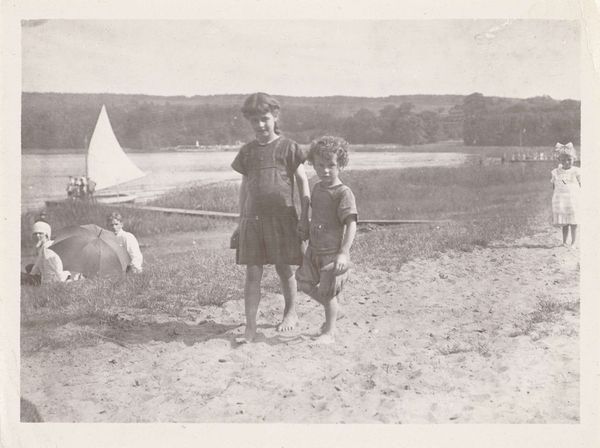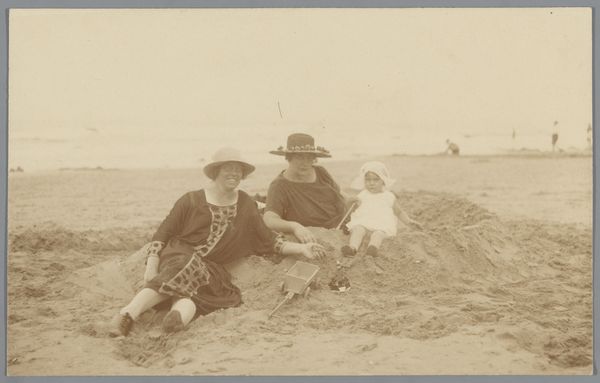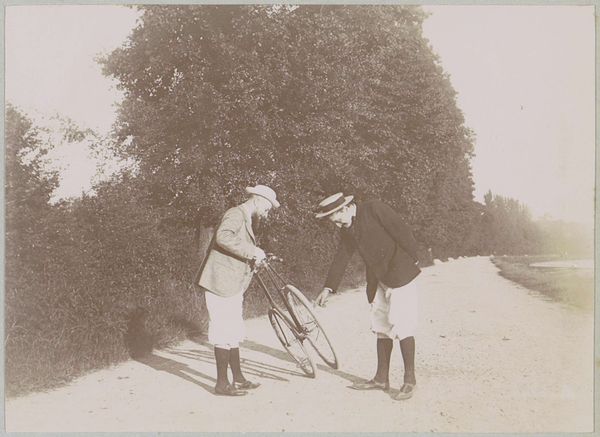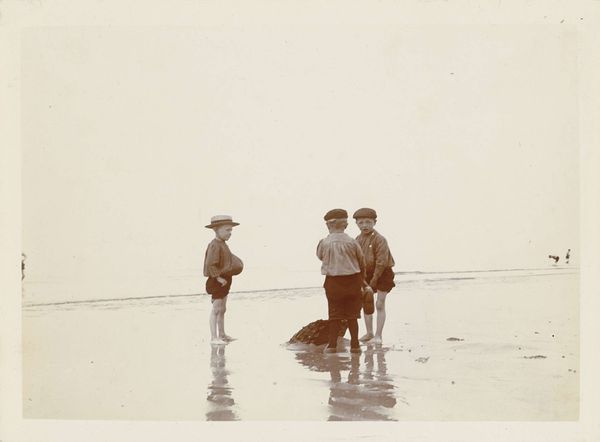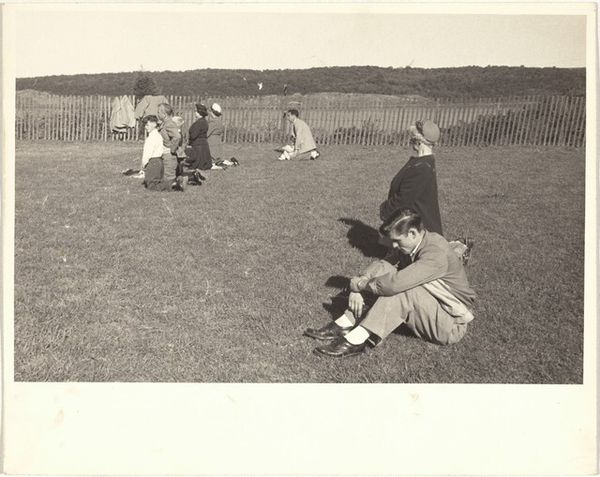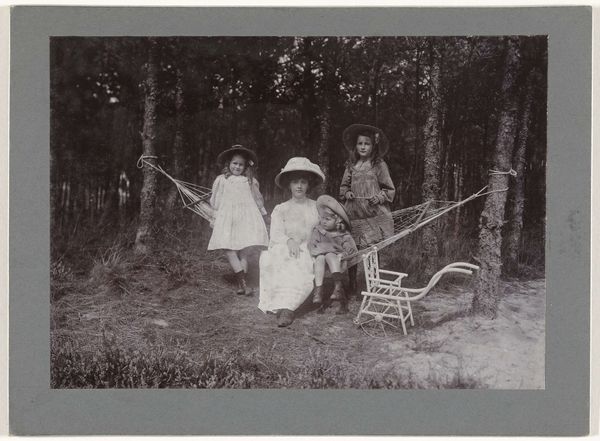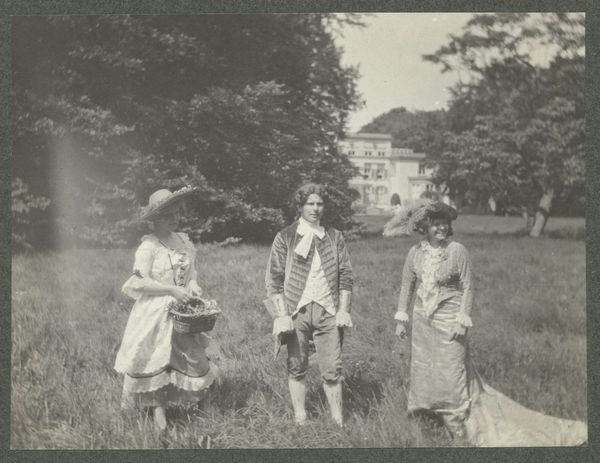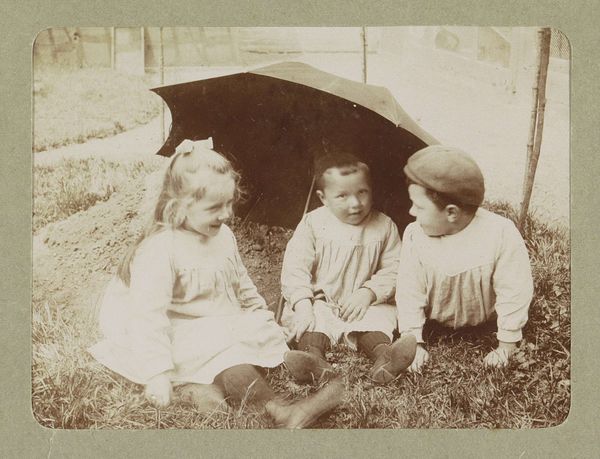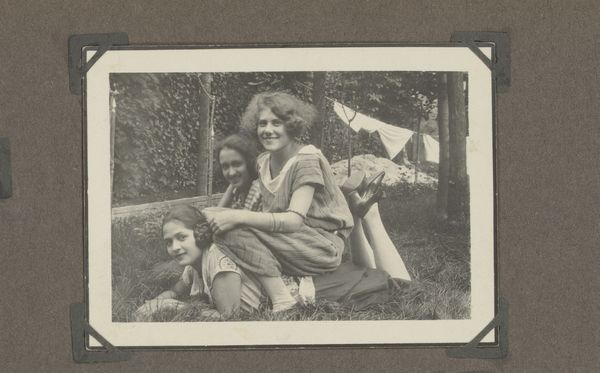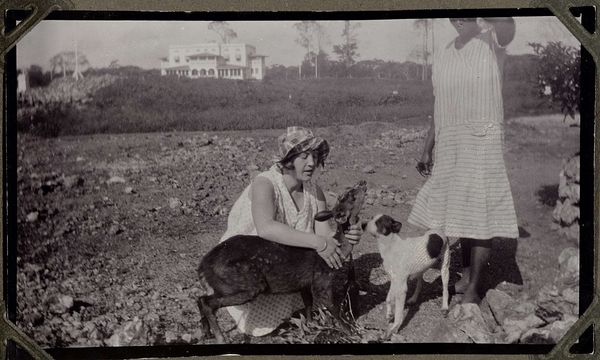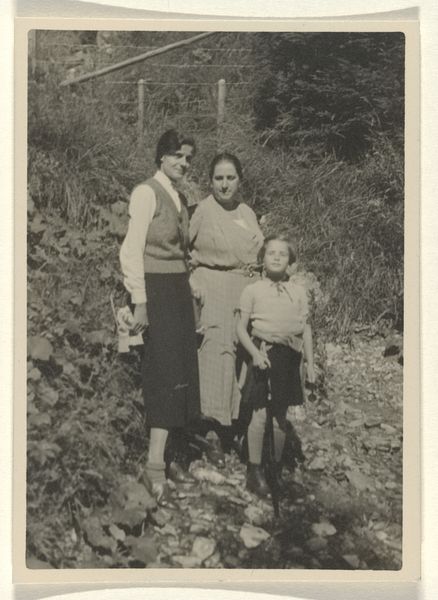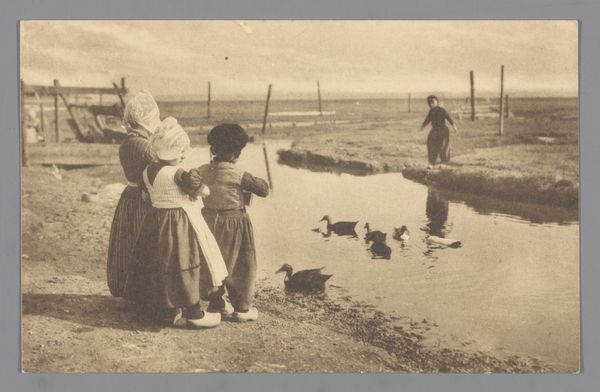
Marba Titzenthaler, dochter van de fotograaf, en een onbekend meisje spelend op het strand bij een meer Possibly 1914
0:00
0:00
photography
#
portrait
#
print photography
#
pictorialism
#
landscape
#
archive photography
#
photography
#
historical photography
Dimensions: height 71 mm, width 95 mm, height 80 mm, width 99 mm
Copyright: Rijks Museum: Open Domain
Curator: This is a photograph attributed to Waldemar Titzenthaler, possibly taken in 1914. The title translates to "Marba Titzenthaler, daughter of the photographer, and an unknown girl playing on the beach by a lake." Editor: It's lovely, really evocative. All blurry edges and soft light. There's a certain carefree feeling. Sand between the toes and the faint, melancholic scent of long-gone summer days… Curator: What I find interesting is the way Titzenthaler utilized Pictorialist techniques in his photography. You can see the manipulated soft focus that was characteristic of the movement, intended to give photography an artistic quality akin to painting. This was quite a specific type of production with photographic prints using gum bichromate and other alternative processes. Editor: I'm lost in their play; look at their dresses! But I find it so curious, these formally posed little girls are barefoot on what looks like such a dreary beach, which clashes with their pristine presentation and the joy in their motions. Curator: Right, that tension is key. On one hand, you have the seemingly candid nature of children playing. However, that overlooks the staging involved – the careful arrangement, clothing, and technical expertise involved in capturing the photograph at a time of nascent camera manufacturing, where cameras were luxury goods only the very wealthy had. We cannot forget the technology! Editor: Absolutely, it is also the framing I think. With the family clustered in the back, it almost reads as two images, with a more personal snapshot in front of us and then an echo with the family, which could suggest this was perhaps also for his portraiture or for advertisement. Who can say? But the materiality helps construct this lovely poem… Curator: A very relevant point to consider – there would've been a lot of time invested by those two playing in capturing this still. I can imagine he produced it in batches – what kind of printing methods were commonplace then, what papers? The whole infrastructure surrounding this one capture is enormous when we pull at that thread. Editor: Yes! That almost makes me love it even more: All this thought put into something as fleeting as a summer day, that only this piece can capture… the art and the technique together really resonate with me. Curator: Indeed, looking closely allows us to delve deeper and grasp all that went into capturing this slice of history. Editor: Just lovely food for thought. I see more stories embedded in this family picture the longer I ponder at it.
Comments
No comments
Be the first to comment and join the conversation on the ultimate creative platform.
